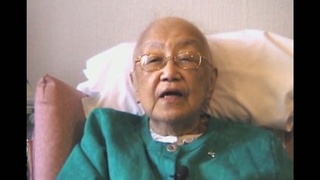Interviews
Inclusiveness of the first Japanese colony in Paraguay (Spanish)
(Spanish) That was the first Japanese settlement, which was founded by my father. In 1936 to be exact. And so that’s where my siblings and I were born. And it was a beautiful place to be, because it was a Japanese enclave, but then the Paraguayans came to settle there as well, not to be with us, but they established many families and we all got along very well together. And my dad, my father was a very inclusive person, so he would work as a volunteer and as an organizer for some kind of event with the Paraguayans. So he always thought about integration. Even the Japanese schools, for example, they opened to Paraguayans and became Paraguayan schools. So, there was quite interesting integration from the very beginning, and I think that was something that we’ve always carried with us, that there wasn’t any kind of discrimination on their part, or on ours either. Even though there’s some history between us, there was never that open discrimination.
Date: October 7, 2005
Location: California, US
Interviewer: Ann Kaneko
Contributed by: Watase Media Arts Center, Japanese American National Museum












